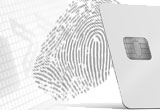The government ID infrastructure will also benefit enterprises, consumers
13 December, 2007
category:

Salvatore A. D’Agostino
Executive Vice President
CoreStreet, Ltd.
The need to verify identity and access includes many everyday tasks. Passports, driver licenses, building keys and access cards, car keys, Social Security numbers, IT passwords, credit cards, even grocery store discount cards, have an important relationship to identity. The challenge becomes how can we use these credentials while safeguarding identity, easing transactions and maintaining security.
The goal of any identity management program should be to simplify access control, provide strong authentication and identity assurance and streamline physical and logical security while providing straightforward administration and the proper amount (if any) of audit control.
Even further the challenge for individuals, enterprises and government agencies implementing identification management and maximizing its potential lies in the ability to separate identity from transactions. While this may seem to contradict the concept of identity management, it lies at the heart of any successful identity management or access control program.
In particular, through HSPD-12, federal, state and local agencies are implementing identity-based services with a single government-wide credential for physical and digital access control.
Additionally, recent DHS exercises, such as Winter Storm and Summer Breeze, have proven what these programs can accomplish. Using products such as the PIVMAN System, agencies were able to validate credentials and privileges for all FIPS-201-compliant credentials including the First Responder Authentication Card (FRAC), Transportation Worker Identification Credential (TWIC), Mariner Administrative Card (MAC) and other legacy credentials such as the DoD Common Access Card (CAC), which includes the National Guard population and driver licenses. Importantly, these credentials were issued by a wide range of organizations, yet through standards, they were able to interoperate with a high level of trust and identity assurance.
As HSPD-12 and DHS identification programs roll out through government agencies, their contractors and the various program populations, enterprise markets will also adopt identification technologies. Using the standard associated with HSPD-12 found in FIPS 201, organizations can streamline IT security logins as well as their physical property, whether it’s a construction site, manufacturing plant or office building. Organizations can also choose to use smart cards or other form factors such as mobile phones with Subscriber Identity Module (SIM) cards.
Making these identity programs a reality requires an identity services infrastructure that enables organizations to create applications that deliver more convenience, security and privacy with less effort and at a lower cost. This infrastructure provides the basis for building all future identity applications, such as network sign-in, secure email, electronic locks for access to secure areas and equipment (file cabinets, shredders, and gun or drug lockers), electronic purses for banking and transit, travel and many of the other transactions that today require a direct link to identity. Again, it likely requires a means of separating identity from transaction to meet the goals of wide acceptance, privacy, speed, security, scalability and minimal marginal cost.
Government credentials are rolling out now. For example, this past year the initial production pilots for TWIC, leveraging FIPS 201, began, underscoring the increasing breadth of the various card programs. As government agencies and enterprises establish their identity services infrastructures, they move closer to the reality of true physical, logical and device convergence.
About the AVISIAN Publishing Expert Panel
At the close of each year, AVISIAN Publishing’s editorial team selects a group of key leaders from various sectors of the ID technology market to serve as Expert Panelists. Each individual is asked to share their unique insight into what lies ahead. During the month of December, these panelist’s predictions are published daily at the appropriate title within the AVISIAN suite of ID technology publications: SecureIDNews.com, ContactlessNews.com, CR80News.com, RFIDNews.org, FIPS201.com, NFCNews.com, ThirdFactor.com, and DigitalIDNews.com.


